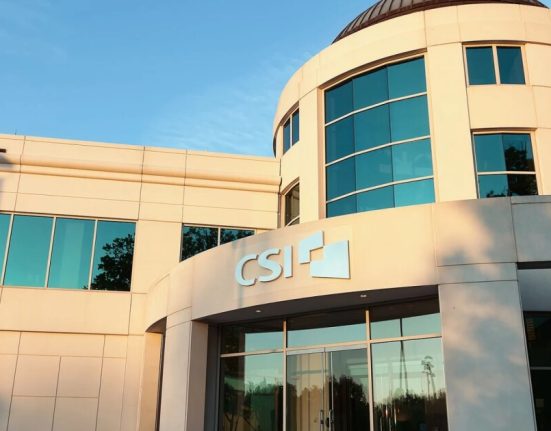KeyBank is working with financial technology company Personetics to create what the companies call “cognitive banking”: engagements with customers combined with needs-based offers tailored to them.
The ability to personalize interactions with customers with useful advice and help specific to them has been a holy grail for banks for years.
“Banks need to evolve beyond basic product-centric approaches,” said Dennis Khoo, managing partner at allDigitalfuture, in a recent report. “Today’s banks are still very much product companies; their whole ethos and organizational structure is around building new products. But many banks also realize that product differentiation is not only fleeting, but undifferentiating. Take savings accounts or personal loans. Consumers can barely distinguish between offerings from Bank A versus Bank B. The real battleground is shifting to user experience and engagement.”
In American Banker’s recent
What KeyBank is doing
Cleveland-based KeyBank, which has $189 billion of assets, plans to soon start piloting a Personetics feature called Enrich, which provides additional information and categorization of customers’ transactions, according to Emily Gessner, senior vice president and head of consumer digital at KeyBank.
The number-one driver of calls to KeyBank’s call centers is transaction inquiries, Gessner told American Banker.
“A lot of the merchant details that are sent back are often unclear or just don’t have that full picture that the customer is able to remember, [such as] recognizing where they had spent their money,” she said. “Enrich is taking those account transactions from our customers and adding relevant detail and clarifying information so that the customer knows where their money is going: What merchant was it? Where was the address of the merchant? All of those specific transaction details.”
“Enrichment is kind of the first layer of everything that is providing value to the customer, because transactions are cryptic,” Udi Ziv, CEO of Personetics, told American Banker. “Add the real [merchant] name, the logo, the location and categorization, and all of a sudden it becomes useful.”
If a customer buys a variety of goods at Walmart or Costco, Personetics can’t see inside the shopping cart and know what the items are, so it will assign a generic category.
AI helps with the analysis of transactions, merchants and locations, Ziv said.
Customers are starting to expect this type of clarity around their transactions, Gessner said.
The next step for KeyBank will be piloting the use of real-time personalized offers Personetics creates based on the customer’s financial picture, which Personetics calls Engage.
“Customers are expecting their primary institution of choice to be able to provide them a 360-degree view of their accounts and how they are performing, from a personal financial management perspective,” Gessner said. “So once we are able to get that Engage experience and all those insights to our customers that are personalized, relevant and ideally in their channel of choice, that’s really when we’re going to see our customers take whatever that next step might be on their financial journey and advance their financial life again. That might mean setting goals and budgets, and hitting those goals.”
The cognitive banking ideal
Ziv describes “cognitive banking” as combining engagement with customers and “humanizing the digital channel.” Personetics works with more than 100 financial institutions, including 50% of the top 40 retail banks in North America, according to the company.
“Every bank that has gone through a digital transformation is proudly serving its customers via digital,” he said. “But with that comes a price, and that is that since only between 1% and 3% of the world population is actually privy to financial advice, whether from a bank or from an independent advisor, digital took away all the human part, all the great things that happen at the branch where the banker actually used to know us, and used to be able to by knowing us, by understanding our context, our history, and also our ambition, was able to help us in context.”
The Enrich and Engage features add up to cognitive banking, an attempt to understand what a customer needs, in the context of their history and current behavior, he said.
“Let’s say we analyze subscriptions, which is a hot topic, right?” Ziv said. “We all have too many of them, many of which we don’t even know we have. So just by showing you a list of your subscriptions, that’s useful information. But then if I can identify that you have potentially redundant subscriptions, let’s say Spotify and Apple Music, you may want both, but maybe one is forgotten and you’re only using the other. That’s identifying a current need, which is useful, but then if within the same context I offer you, ‘click here to initiate canceling one of them,’ all of a sudden, I’m allowing you to act upon it.”
Another example would be analyzing a customer’s past performance, trends and transactions to predict that person’s future expense and income.
“We can basically say that within a seven-day period, you will go into an overdraft and reach a low of negative $1,200,” Ziv said. “That, by itself, is very useful, because you look at your balance, it looks good, but it will go down and become negative. But then if within that same context, you are able to now click a button that says, ‘click here to get a bridge loan until your next paycheck for the exact amount that you need in order to bridge the overdraft,’ that’s closing the loop for the customer.”
In the future, KeyBank hopes to enter this “do it for me” phase of taking action on the customer’s behalf when it makes sense, such as in canceling redundant subscriptions, Gessner said.
“Don’t just tell me I’m paying two Netflix subscriptions, tell me how I cancel them, or just cancel them on my behalf,” Gessner said. “Banks have to be on their A game and provide information that’s upfront, relevant and timely, so that the customers are able to take the appropriate action.”
KeyBank is not quite ready to offer a customer a bridge loan when the software predicts their balance is going to go negative, Gessner said.
“Right now think of us as a crawl, walk, run into this experience,” she said. “The Enrich and Engage offerings that we’re currently working on are moving us from crawling to walking. After we see the expected positive results from a client and bank perspective, I think then we’ll start to really work with Udi and the team around what’s next, and what else are customers wanting or expecting from these as kind of a phase three approach.”







